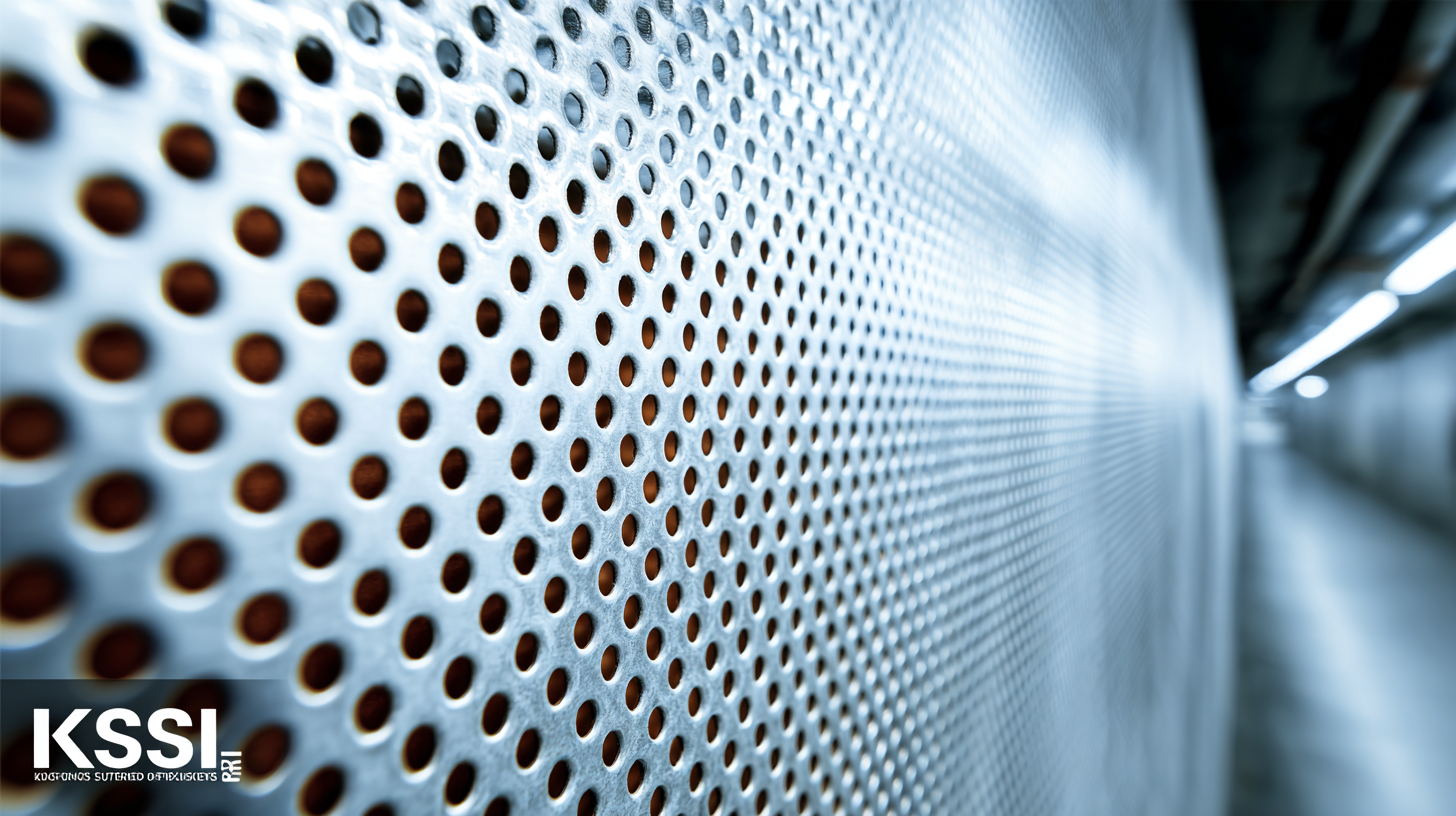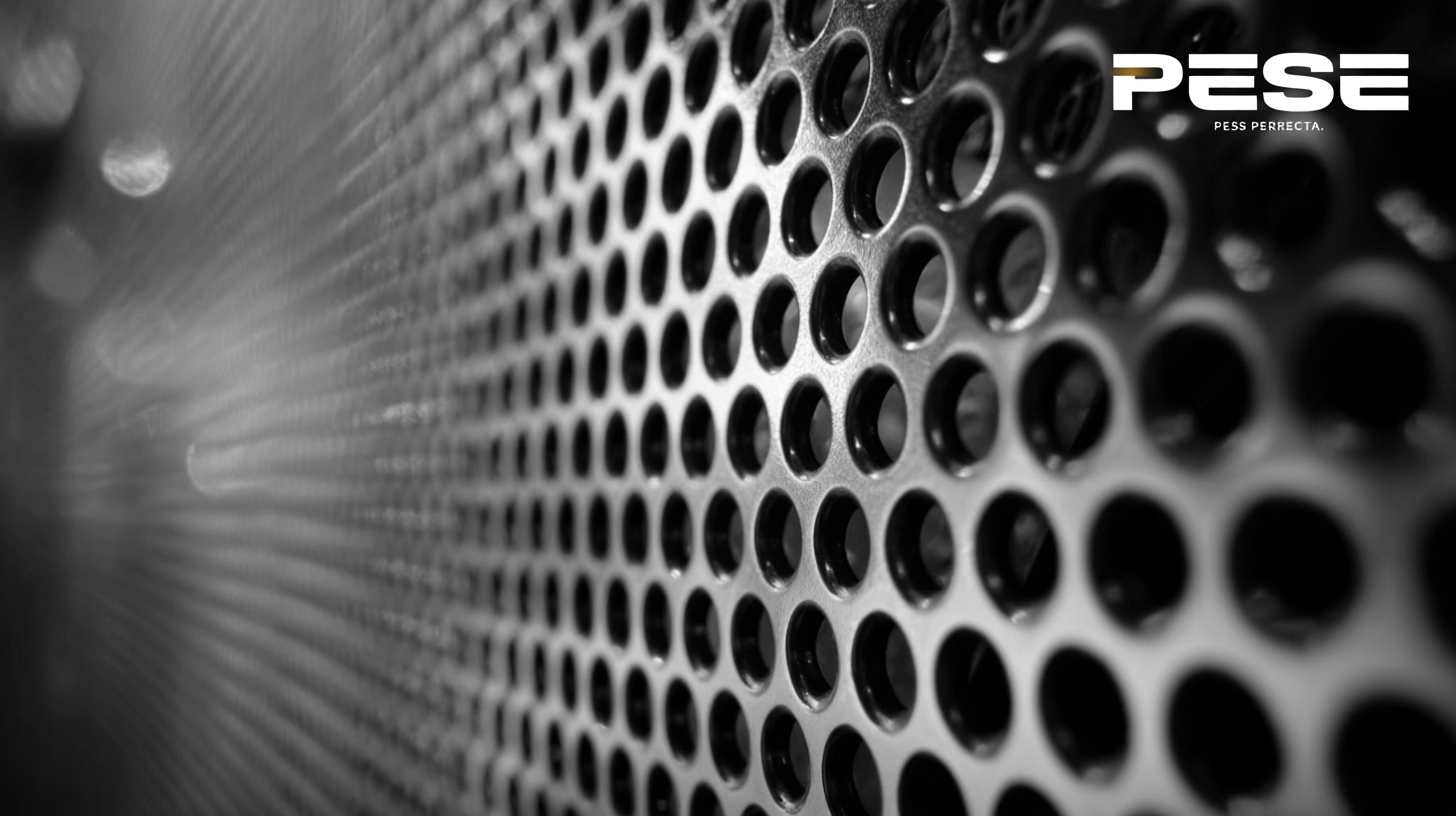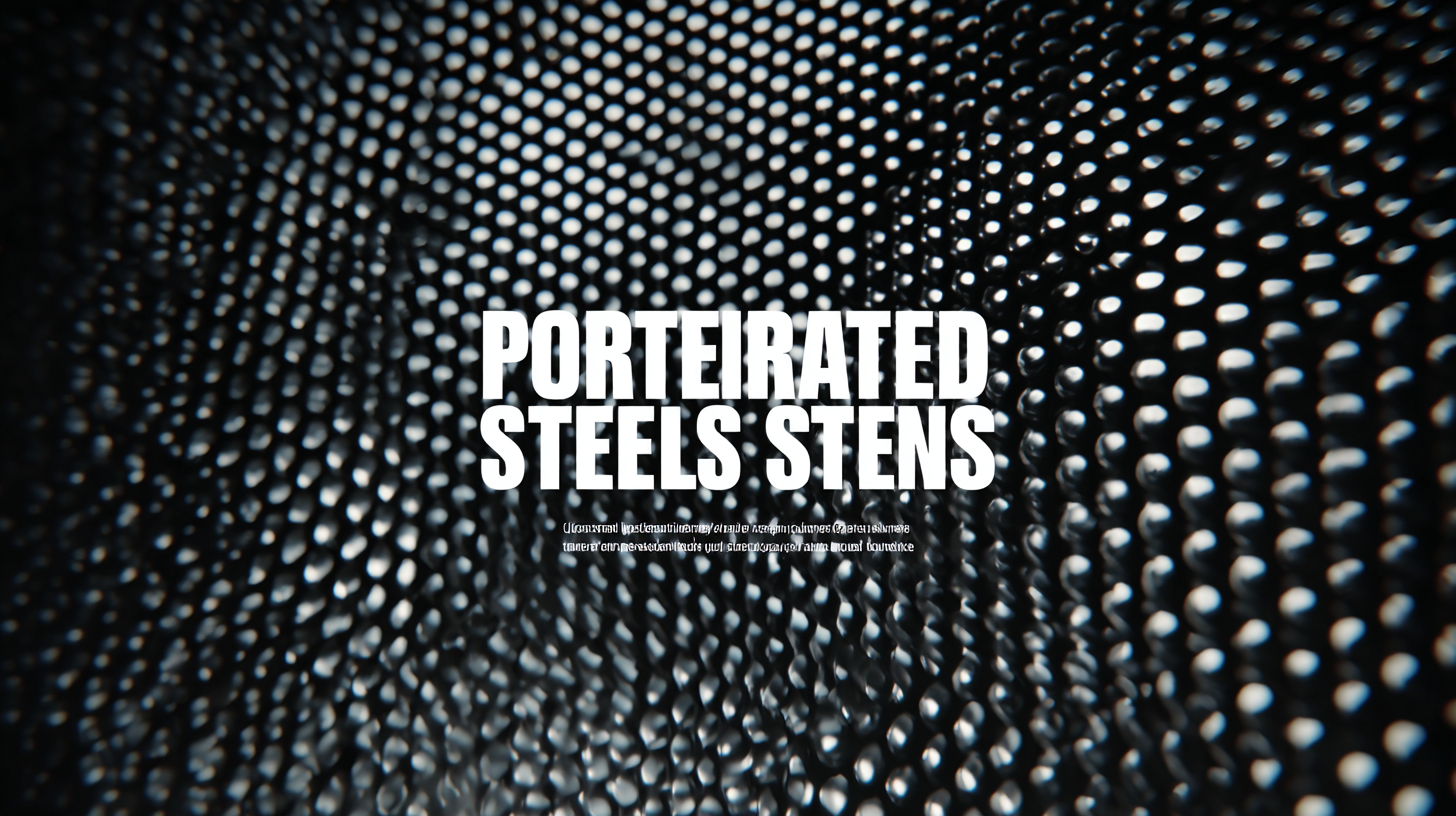In today's industrial landscape, the use of high-quality materials is essential for achieving optimal performance, particularly in filtration and separation processes. One such material that stands out is the Perforated Stainless Steel Screen, renowned for its durability, versatility, and effectiveness in a variety of applications. This definitive guide aims to explore the best sourcing strategies for these screens, focusing on key attributes such as hole patterns, gauge thickness, and corrosion resistance that contribute to their functionality and longevity. Whether used in food processing, mining, or wastewater treatment, understanding how to source the right perforated stainless steel screens can significantly enhance operational efficiency. Join us as we delve into the myriad solutions available in the market that cater to diverse industry needs, ensuring you select the ideal perforated stainless steel screen for your specific requirements.

Perforated stainless steel screens play a critical role in various industrial applications, serving as essential components in filtration, separation, and material handling processes. Their unique design—featuring strategically placed holes—enables efficient airflow, fluid movement, and light passage while maintaining structural integrity. This makes them ideal for industries ranging from mining and petroleum to food processing and pharmaceuticals, where the need for durability and hygiene is paramount.
The importance of these screens lies not only in their functionality but also in their ability to enhance operational efficiency. By allowing for optimum flow rates and reducing the risk of clogs, perforated stainless steel screens minimize downtime and maintenance costs. Additionally, their corrosion-resistant properties ensure longevity, making them a reliable choice for even the harshest environments. Considering the significant impact of these screens on productivity, understanding their specifications and sourcing the best quality becomes essential for industries aiming to optimize performance and sustainability in their operations.
When selecting perforated stainless steel screens, it’s vital to consider specific performance needs that align with your applications.
 The first criterion is hole size; screens with smaller perforations are ideal for fine particles, while larger holes accommodate bulkier materials. According to industry reports, the optimal hole size can dramatically impact flow rates and filtration efficiency, with most high-performing screens having a perforation size between 1/16" to 1/4" for various uses.
The first criterion is hole size; screens with smaller perforations are ideal for fine particles, while larger holes accommodate bulkier materials. According to industry reports, the optimal hole size can dramatically impact flow rates and filtration efficiency, with most high-performing screens having a perforation size between 1/16" to 1/4" for various uses.
Another key factor is material thickness. Thicker stainless steel enhances durability and longevity, ensuring the screen withstands pressure and reduces deformation over time. Data shows that screens with a thickness of 16 gauge or higher often exhibit superior performance in demanding environments. Additionally, the type of finish is crucial – a smooth finish minimizes material buildup, streamlining maintenance and improving operation efficiency. Choosing the right combination of these criteria will significantly enhance performance, making your sourcing decision critically important for achieving optimal results in any application.
When it comes to selecting perforated stainless steel screens for optimal performance, both thickness and hole size play crucial roles that cannot be overlooked. Recent studies highlight that variations in thickness can significantly impact the structural integrity and longevity of the screens. For instance, a higher thickness often leads to increased resistance to bending and deformation under stress, which is essential in high-traffic areas or industrial applications. Additionally, the hole size directly influences the filtration efficiency and airflow characteristics, making it vital to match these parameters with the intended use of the screen. For example, smaller holes can trap finer particles, whereas larger holes allow for better airflow in applications requiring ventilation.
**Tips:** When considering perforated stainless steel screens, always assess the specific environmental conditions and requirements of your application. Additionally, consult technical datasheets for insights into how varying thicknesses and hole sizes can affect performance metrics like flow rate and material strength. Customizing the design based on sound engineering principles can lead to enhanced operational outcomes.
Furthermore, recent advancements in screen technology, such as the experimental study on sound absorption performance, demonstrate the versatility and innovative capabilities of perforated materials. By selecting the right specifications, it’s possible to achieve not only superior mechanical properties but also enhanced acoustic performance, offering a dual benefit that could be game-changing in construction and design sectors.
When sourcing perforated stainless steel screens, understanding the material quality is paramount, particularly between 304 and 316 stainless steel. According to industry reports from the International Stainless Steel Forum, 304 stainless steel accounts for approximately 60% of all stainless steel production, valued for its good corrosion resistance and formability. This makes it a popular choice for standard applications, although it is not the best option for environments exposed to chlorides, which can lead to pitting and crevice corrosion.
In contrast, 316 stainless steel, which contains molybdenum, exhibits superior corrosion resistance, particularly in saline and acidic conditions. The Nickel Institute indicates that 316 stainless steel has an estimated 1000-hour resistance to salt spray, a crucial factor for applications in marine or chemical processing industries. Furthermore, research from the Engineering Toolbox highlights that surface finish and alloy composition can significantly impact the longevity and performance of stainless steel screens, suggesting that the initial cost savings with 304 may be offset by the shorter lifespan in challenging environments. Therefore, choosing the right material based on specific application requirements is essential for optimizing performance and durability in perforated stainless steel screens.
| Material Type | Corrosion Resistance | Common Applications | Cost (per kg) | Durability Rating |
|---|---|---|---|---|
| 304 Stainless Steel | Moderate | Food Processing, Chemical Industry | $2.50 | Good |
| 316 Stainless Steel | High | Marine Environments, Medical Devices | $3.00 | Excellent |
| 430 Stainless Steel | Low | Automotive Parts, Kitchen Equipment | $2.00 | Fair |
| Duplex Stainless Steel | Very High | Oil & Gas, Chemical Processing | $3.50 | Outstanding |
Maintaining perforated stainless steel screens is essential for ensuring their longevity and optimal performance. One of the key tips is to regularly clean the screens to prevent the build-up of debris and contaminants. This can be done using mild detergents and soft brushes to avoid scratching the surface, thereby preserving the integrity of the screen. Establishing a cleaning schedule based on the frequency of use will help in maintaining the screens in optimal condition.
Another important aspect of maintenance is the regular inspection of the screens for signs of wear or corrosion. Even stainless steel can be susceptible to environmental factors that could lead to deterioration. Early detection of any issues can prevent larger problems down the line. Additionally, storing the screens in a dry and controlled environment will further protect them from rust and other forms of damage, helping to extend their usable life significantly. Remember, a little care goes a long way in keeping your perforated stainless steel screens functioning effectively and efficiently.

